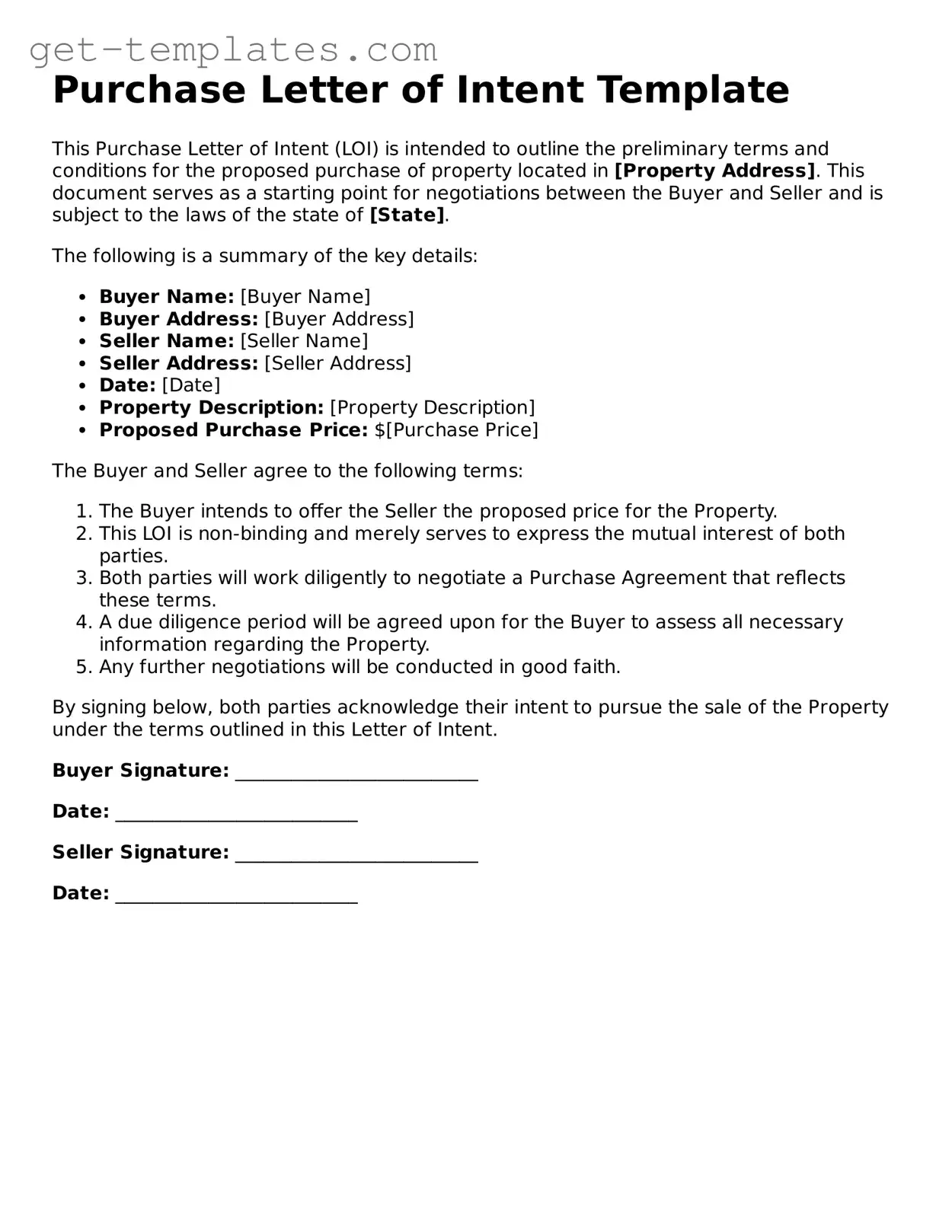Purchase Letter of Intent Template
This Purchase Letter of Intent (LOI) is intended to outline the preliminary terms and conditions for the proposed purchase of property located in [Property Address]. This document serves as a starting point for negotiations between the Buyer and Seller and is subject to the laws of the state of [State].
The following is a summary of the key details:
- Buyer Name: [Buyer Name]
- Buyer Address: [Buyer Address]
- Seller Name: [Seller Name]
- Seller Address: [Seller Address]
- Date: [Date]
- Property Description: [Property Description]
- Proposed Purchase Price: $[Purchase Price]
The Buyer and Seller agree to the following terms:
- The Buyer intends to offer the Seller the proposed price for the Property.
- This LOI is non-binding and merely serves to express the mutual interest of both parties.
- Both parties will work diligently to negotiate a Purchase Agreement that reflects these terms.
- A due diligence period will be agreed upon for the Buyer to assess all necessary information regarding the Property.
- Any further negotiations will be conducted in good faith.
By signing below, both parties acknowledge their intent to pursue the sale of the Property under the terms outlined in this Letter of Intent.
Buyer Signature: __________________________
Date: __________________________
Seller Signature: __________________________
Date: __________________________
